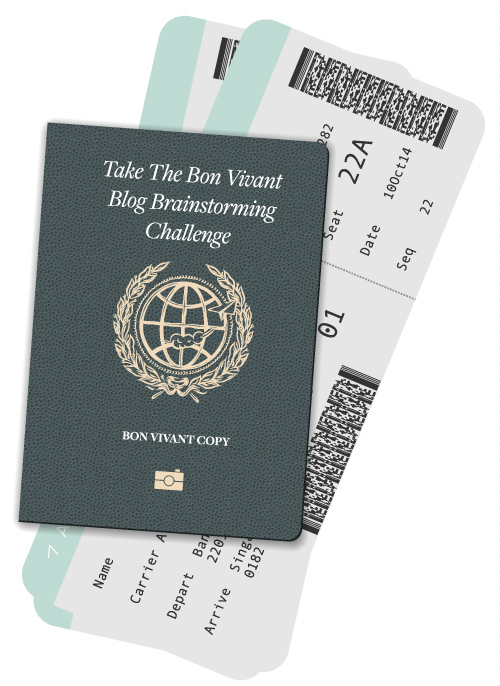
Maybe your website looks like it was created back when NSYNC topped the charts.
Maybe you’re a new travel advisor and don’t have a web presence yet.
Or maybe you’ve been in the industry for a while and have refined your focus—but your current website doesn’t reflect what you do now, or who you serve, at all.
Whatever the reason, you KNOW you need a new website for your travel business. You just don’t know where to start.
Since website copy is my signature service, I’ve spent a lot of time counseling my clients on their website options. Here’s the biggest pieces of advice I share with them:
If you’re looking for a custom web designer, seek out someone who works with “serviced-based” clients.
Sure, you could try to find a web designer who has experience building from-scratch websites for travel advisors—but there aren’t many out there. So as you’re starting your search, I suggest looking for designers who at least have a lot of experience with serviced-based businesses, because that’s what a travel advisor is!
By “service-based,” I mean other professionals who offer services—like financial advisors, interior designers, personal stylists, psychologists, etc. This is in contrast to “e-commerce” businesses, that are mainly selling a product. The structure of a service-based business website is very different from an e-commerce one, so you want to make sure your web designer knows how to nail the former!
If you’re going the DIY template route, consider template options designed for providers in a “niche” adjacent to your own.
Look, there just aren’t that many DIY templates out there for travel advisors—and the travel agency templates I’ve seen aren’t really geared toward the modern approach most of the travel advisors I know take today. Case in point, here’s the live preview of a “travel agency” template that just doesn’t seem to work for many advisors, since it’s more about showcasing tour packages and itineraries than the one-on-one services a travel advisor provides.
However, I’ve had clients have success by picking templates that were designed for professionals in a similar industry/specialty/niche. For example, a destination wedding travel specialist used a template made for wedding photographers—she had to make some tweaks, but it worked because the “feel” of the design already aligned with her aesthetic, and the way a photographer works is similar to how she worked as a travel advisor: by offering different tiers of services.
So, if you design celebration/milestone travel, try searching for event planner templates, if you’re a family travel specialist, maybe try seeking out family photographer templates (or perhaps even family-focused psychologist templates), if you’re a culinary travel specialist, try templates for personal chefs—you get the idea!
Be honest about your abilities—and your time.
Real talk if you’re going the DIY route: No matter what template you choose, you’re going to have to make some changes to it. It’s nearly impossible to find a template that perfectly aligns with your branding (like colors/font, etc), your service offerings, and your process. Plus, you’ll need to change out photos, your logo, and more.
It may be easier than ever to DIY a website … but that still doesn’t mean it’s “easy.” All of the above is going to require some technical prowess. If being techy is just not your strong suit, a DIY website might give you a whole lot of trouble. And even if you are pretty tech-savvy, tweaking a template to fit your vision is very, very time-consuming (I’ve done it myself!).
I mention this just so you understand that this will be a big undertaking, even if you’re not technically starting from scratch. So be sure to carve out plenty of time.
By the way, if you want to split the difference between working with a custom web designer and going the DIY route, take a look at the semi-custom options offered by In Flow Design Co. (formerly GirlBoss Designer). Kristin and her team have created some beautiful templates just for travel advisors, and with the semi-custom option they’ll tailor your template to your brand colors, font, photos, and more. And here’s the best part—they do it all for you, including uploading all your web copy. (P.S. This shout out is not sponsored; I’ve just had a lot of happy clients work with them!)
Know when to rope in a copywriter.
So where does a copywriter come into play? If you decide to work with one—and I may be biased, but I think you should ;)—here’s my rule of thumb:
Working with a web designer on a custom website? You’ll definitely want to get the copy from your copywriter before your web designer begins building your site. That way, they have something to design around, instead of trying to concept a site out of thin air (and they can maintain the “messaging hierarchy” that your copywriter has developed for you).
DIYing your copy from a template? You’ll want to choose your template before your copywriter begins writing—so that they can write the copy to fit the template you’ve chosen, making it easy for you to upload the copy on the backend. Your copywriter may be able to provide some guidance if you’re a little stuck on which template to use. If my client is having trouble choosing between a couple of template options they’ve found, I tell them we’ll talk it over and compare them together on our strategy call!
